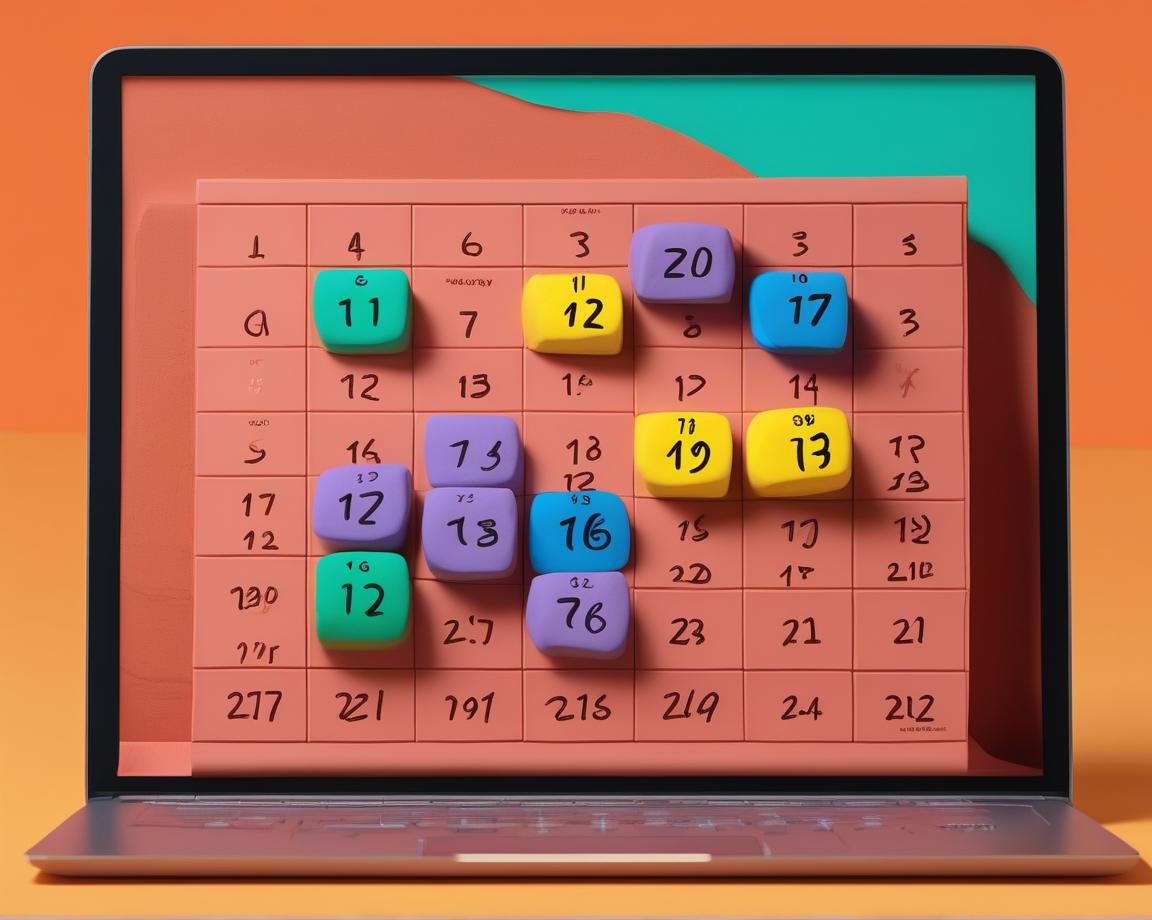12 months and several company milestones later, we’re excited to launch the third generation of Clay’s pricing.
We value transparency and feedback, and we love helping other teams think through business problems. The memo that explained our pricing changes a year ago got thousands of views and dozens of notes from teams who found it helpful.
So we’re doing it again! Read on for a quick summary of our changes and a behind-the-scenes look at our internal memo.
TL;DR: Introducing credit rollover and credit top-ups
Our main change is introducing credit rollover and credit top-ups. These are two updates that customers have frequently requested in order to have more flexibility and control over their credit usage.
Credit rollover: If you don’t use all your Clay credits in a given month, you can roll them over—up to twice your current monthly plan allowance.

Credit top-ups: You can purchase additional credits at a 50% premium anytime during your billing cycle.

Truthfully, we struggled with this decision for a while. Substantial pricing changes are scary, and this one lacked market precedent. Monthly credit expirations are standard and we don’t know of B2B self-serve companies that offer credit rollovers and top-ups, along with annual plans that offer all credits up-front.
But we still went for it!
Here’s our internal memo explaining why.
Internal memo: Clay credit rollovers & top-ups
Why enable credit rollovers and top-ups?
We want to introduce these features for one simple reason: it’s the right thing to do for customers.
Many customers—especially smaller companies—have unpredictable prospecting needs and want more billing flexibility.
Today, without the ability to top up credits or roll over unused credits, some customers have to upgrade to a plan above their usual usage level or cancel to avoid wasting unused credits. That feels like an undue burden on our customers, and our team spends hours each week helping customers with manual billing adjustments.
In the screenshot below, a healthy, adopted, and active customer had to upgrade in the middle of their billing cycle and then contact support to get a partial refund for unused credits.


Our new billing system is designed with extra flexibility so that customers don’t have to upgrade and pay for more credits than necessary—or downgrade or cancel when they have unused credits.
In turn, this helps save our support team time so they can focus on helping customers with their GTM efforts.
Reasons to cap credit rollovers
Credit rollovers are intended to help customers with unused credits who are still prospecting regularly. A credit rollover limit of 2x someone’s current plan allowance can accommodate longer campaign cycles and unexpected usage patterns up to a few months.
If customers are underusing credits for more than a few months, they are likely not activated, and there’s no point in accumulating more credits. For these types of customers, we focus our customer support and product/marketing resources to help them activate.
Finally, limiting the amount of credit rollover helps us manage the accounting risk of having undelivered services as a liability on our balance sheet.
Rationale behind our credit top-up pricing
Credit top-ups are intended for one-off cases and should help customers with an occasional need for extra credits. Customers who go over on usage every month are encouraged to upgrade plans, because recurring plans have better unit costs per credit.
Hypothesis on the combined impact of credit rollovers & credit top-ups
Credit rollover and top-ups will help customers pick plans that reflect their needs more accurately. Customers get more billing flexibility; we get more reliable revenue tracking with fewer false cancels/upgrades/downgrades.
Potential monetization risks
We want to ensure that offering more flexible credit purchase options, like top-ups, doesn’t cause customers to stop upgrading to higher or annual plans.
Given that credit top-ups have a higher unit price compared to standard plans, customers with consistent prospecting needs should continue to upgrade their plan. There may be fewer upgrades in the short term, but incremental revenue from credit top-ups should mitigate the overall revenue risk.
We also believe that customers purchase annual plans mainly because 1) they expect to use Clay regularly and 2) they like the significant annual plan discount. Customers on an annual plan are likely a different segment than the ones who would purchase credit top-ups, further mitigating the risk of a reduction in annual plan elections.
Potential monetization benefits
It’s hard to predict the net revenue impact of credit rollovers and top-ups, but we believe that they will incentivize customers to subscribe to the recurring plans that best reflect their steady-state needs.
This should result in fewer irregular revenue patterns, like episodic churning, when customers restart plans within 3 months of churning. Customers would also be incentivized to downgrade rather than cancel plans with credit caps in place, since they’d only be able to keep 200 credits max.
Top-ups should also prevent customers from needing to upgrade just to get more credits—and then immediately downgrade plans. Downgraders would be incentivized to downgrade incrementally to roll over more credits on their accounts.
Customer FAQs
How do credit top-ups and rollovers benefit me?
Credit top-ups and credit rollover give you billing flexibility. If you have unused credits on your account when your billing refreshes, you can keep them to use later. If you’re short on credits and need a quick solution, you can top-up on credits without needing to upgrade plans.
How do credit rollovers work?
All customers are automatically enrolled into credit rollovers at their next billing date. Credit rollovers allow you to carry over and keep unused credits after a billing period ends. You can accumulate unused credits up to twice the amount of your monthly credit allocation based on your current plan.
Example:
If your plan includes 100 credits per month, you can roll over any unused credits until you accumulate a maximum of 200 credits in your account.
How do credit top-ups work?
Credit top-ups allow you to purchase additional credits anytime in your billing cycle, starting at 250 credits.
How are credit top-ups priced?
Each additional credit is priced at 1.5 times the unit cost of your current plan.
Will my billing cycle date reset if I purchase credit top-ups?
No, your billing cycle will not change if you purchase credit top-ups.
What happens if I currently have more than twice my monthly credit limit?
If your credits exceed twice your monthly limit, your credit balance will be adjusted down to the 2x cap. However, you will have a one-off grace period of 1 month after your next billing date to use all your excess credits.
Example:
If today is May 1st and your billing date is May 15th, your balance will be adjusted down on June 15th.

Can I use credits from a rollover or credit top-up for any feature?
Yes. Credits from both rollover and credit top-ups can be used just like your regular monthly credits. They apply to all the same features and services available under your current plan.
Do credits purchased from credit top-ups roll over?
Yes. Credits purchased from credit top-ups can roll over as long as your total balance is under the 2x cap at the beginning of your next billing cycle. Otherwise, your credit balance will be capped at 2x your credit limit.
What should I do if I have further questions?
If you have specific questions or scenarios not covered here, please reach out to us via Slack or support@clay.run.
12 months and several company milestones later, we’re excited to launch the third generation of Clay’s pricing.
We value transparency and feedback, and we love helping other teams think through business problems. The memo that explained our pricing changes a year ago got thousands of views and dozens of notes from teams who found it helpful.
So we’re doing it again! Read on for a quick summary of our changes and a behind-the-scenes look at our internal memo.
TL;DR: Introducing credit rollover and credit top-ups
Our main change is introducing credit rollover and credit top-ups. These are two updates that customers have frequently requested in order to have more flexibility and control over their credit usage.
Credit rollover: If you don’t use all your Clay credits in a given month, you can roll them over—up to twice your current monthly plan allowance.

Credit top-ups: You can purchase additional credits at a 50% premium anytime during your billing cycle.

Truthfully, we struggled with this decision for a while. Substantial pricing changes are scary, and this one lacked market precedent. Monthly credit expirations are standard and we don’t know of B2B self-serve companies that offer credit rollovers and top-ups, along with annual plans that offer all credits up-front.
But we still went for it!
Here’s our internal memo explaining why.
Internal memo: Clay credit rollovers & top-ups
Why enable credit rollovers and top-ups?
We want to introduce these features for one simple reason: it’s the right thing to do for customers.
Many customers—especially smaller companies—have unpredictable prospecting needs and want more billing flexibility.
Today, without the ability to top up credits or roll over unused credits, some customers have to upgrade to a plan above their usual usage level or cancel to avoid wasting unused credits. That feels like an undue burden on our customers, and our team spends hours each week helping customers with manual billing adjustments.
In the screenshot below, a healthy, adopted, and active customer had to upgrade in the middle of their billing cycle and then contact support to get a partial refund for unused credits.


Our new billing system is designed with extra flexibility so that customers don’t have to upgrade and pay for more credits than necessary—or downgrade or cancel when they have unused credits.
In turn, this helps save our support team time so they can focus on helping customers with their GTM efforts.
Reasons to cap credit rollovers
Credit rollovers are intended to help customers with unused credits who are still prospecting regularly. A credit rollover limit of 2x someone’s current plan allowance can accommodate longer campaign cycles and unexpected usage patterns up to a few months.
If customers are underusing credits for more than a few months, they are likely not activated, and there’s no point in accumulating more credits. For these types of customers, we focus our customer support and product/marketing resources to help them activate.
Finally, limiting the amount of credit rollover helps us manage the accounting risk of having undelivered services as a liability on our balance sheet.
Rationale behind our credit top-up pricing
Credit top-ups are intended for one-off cases and should help customers with an occasional need for extra credits. Customers who go over on usage every month are encouraged to upgrade plans, because recurring plans have better unit costs per credit.
Hypothesis on the combined impact of credit rollovers & credit top-ups
Credit rollover and top-ups will help customers pick plans that reflect their needs more accurately. Customers get more billing flexibility; we get more reliable revenue tracking with fewer false cancels/upgrades/downgrades.
Potential monetization risks
We want to ensure that offering more flexible credit purchase options, like top-ups, doesn’t cause customers to stop upgrading to higher or annual plans.
Given that credit top-ups have a higher unit price compared to standard plans, customers with consistent prospecting needs should continue to upgrade their plan. There may be fewer upgrades in the short term, but incremental revenue from credit top-ups should mitigate the overall revenue risk.
We also believe that customers purchase annual plans mainly because 1) they expect to use Clay regularly and 2) they like the significant annual plan discount. Customers on an annual plan are likely a different segment than the ones who would purchase credit top-ups, further mitigating the risk of a reduction in annual plan elections.
Potential monetization benefits
It’s hard to predict the net revenue impact of credit rollovers and top-ups, but we believe that they will incentivize customers to subscribe to the recurring plans that best reflect their steady-state needs.
This should result in fewer irregular revenue patterns, like episodic churning, when customers restart plans within 3 months of churning. Customers would also be incentivized to downgrade rather than cancel plans with credit caps in place, since they’d only be able to keep 200 credits max.
Top-ups should also prevent customers from needing to upgrade just to get more credits—and then immediately downgrade plans. Downgraders would be incentivized to downgrade incrementally to roll over more credits on their accounts.
Customer FAQs
How do credit top-ups and rollovers benefit me?
Credit top-ups and credit rollover give you billing flexibility. If you have unused credits on your account when your billing refreshes, you can keep them to use later. If you’re short on credits and need a quick solution, you can top-up on credits without needing to upgrade plans.
How do credit rollovers work?
All customers are automatically enrolled into credit rollovers at their next billing date. Credit rollovers allow you to carry over and keep unused credits after a billing period ends. You can accumulate unused credits up to twice the amount of your monthly credit allocation based on your current plan.
Example:
If your plan includes 100 credits per month, you can roll over any unused credits until you accumulate a maximum of 200 credits in your account.
How do credit top-ups work?
Credit top-ups allow you to purchase additional credits anytime in your billing cycle, starting at 250 credits.
How are credit top-ups priced?
Each additional credit is priced at 1.5 times the unit cost of your current plan.
Will my billing cycle date reset if I purchase credit top-ups?
No, your billing cycle will not change if you purchase credit top-ups.
What happens if I currently have more than twice my monthly credit limit?
If your credits exceed twice your monthly limit, your credit balance will be adjusted down to the 2x cap. However, you will have a one-off grace period of 1 month after your next billing date to use all your excess credits.
Example:
If today is May 1st and your billing date is May 15th, your balance will be adjusted down on June 15th.

Can I use credits from a rollover or credit top-up for any feature?
Yes. Credits from both rollover and credit top-ups can be used just like your regular monthly credits. They apply to all the same features and services available under your current plan.
Do credits purchased from credit top-ups roll over?
Yes. Credits purchased from credit top-ups can roll over as long as your total balance is under the 2x cap at the beginning of your next billing cycle. Otherwise, your credit balance will be capped at 2x your credit limit.
What should I do if I have further questions?
If you have specific questions or scenarios not covered here, please reach out to us via Slack or support@clay.run.




























































